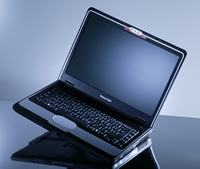 We played with the Packard Bell EasyNote ‘Skype Edition’ Laptop, at its first European showing yesterday. The machine we used was the only one in Europe and had been jetted in from development labs in Estonia.
We played with the Packard Bell EasyNote ‘Skype Edition’ Laptop, at its first European showing yesterday. The machine we used was the only one in Europe and had been jetted in from development labs in Estonia.
They claim it to be the worlds first ‘Skype Edition’ laptop, and we’ve no reason to doubt them. While many machines have been selling with Skype pre-loaded on it, this is the first to have a dedicated button built-in to the machine.
If your reaction is, ‘so what? It’s a laptop with a soft-button on it,’ that wouldn’t have been too dissimilar to our initial reaction – before we used it. After having seen it action, our view is more favorable.
Where’s the button?
Our first surprise was to find the Skype button at the top of the screen, where you normally find the catch. We’d expected it to be on or around the keyboard.
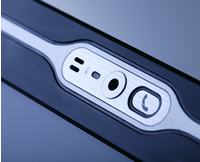 As you can see from the close-up photo, the Skype button sits on the right, the microphone on the left and in the centre is a video camera, a la new Mac laptops. There’s an LED between the mic and video camera and another surrounding the Skype button.
As you can see from the close-up photo, the Skype button sits on the right, the microphone on the left and in the centre is a video camera, a la new Mac laptops. There’s an LED between the mic and video camera and another surrounding the Skype button.
How does it work?
The button performs various functions depending on what you’re doing with Skype at the time.
If you’re working on another app and feel the urge to Skype someone, pressing the Skype button, brings the software to the foreground. No big shock there.
When a Skype call comes in to you, pressing the button answers the call, bringing you live.
There’s a LED surrounding the button that shows various states of call as follows
- Orange colored when Skype application is connected to Internet and in idle mode
- Orange/Green alternate blinking when there is an incoming Skype call
- Green when there is an active Skype call in progress
- OFF when Skype application is not connected to Internet or not launched
The green LED between the mic and camera shows solid green to indicated you have a call in progress, perhaps to save you from the embarrassment of slagging off the person you’ve just completed a call with, while thinking the call had finished.
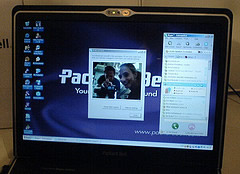 Calling quality
Calling quality
One of the concerns we’d had was the placement of the mic and the call quality that might bring.
We know that the mic on the Apple iBook lid is less than great to be using with Skype. We often find ourselves craning our necks forward, and half closing the lid to get close enough to the mic to make ourselves heard by the other party.
Packard-Bell appear to have got over this. In the call that we placed, the other end reported they could hear us perfectly well, despite us being around two feet away from the laptop and the room that we were calling from being pretty noisy.
On reflection we realised that the palaver we go through with the Mac wouldn’t work on this machine as, if you were on a video call, they’d be getting a view of your space bar.
Video built-in
As I’m sure you know, video conferencing has been included in Skype for a while now (it was one of the most requested features). By including the camera at the lid, Packard-Bell have made it easy to video call while on the move – without having to lash video cameras to the lid of your machine.
Having seen the preview window, we can report that the results were pretty impressive. The quality appeared to be more that sufficient for video conferencing.
General spec and availability
The general spec of this machine is described by Packard-Bell as having a “high-performance Intel Dual-core.”
We’ve absolutely no idea what the general computing function of this machine is – that’s not what we were looking at. Given that PC designs has been perfecting since the release of the IBM XT, we’d suspect that it’s pretty much as you’d expect.
The Packard-Bell EasyNote ‘Skype Edition’ is expected to be getting to retail in August this year at a cost of E899.
 Something will go wrong sooner or later with nearly one-fifth of all notebooks, with a new hardware component needed to sort the problem, according to a new survey by industry analysts Gartner.
Something will go wrong sooner or later with nearly one-fifth of all notebooks, with a new hardware component needed to sort the problem, according to a new survey by industry analysts Gartner.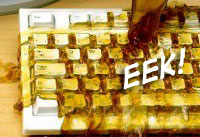 Laptops have also shown a significant improvement, with features like suspension mounting of hard drives and rubber bumpers between laptop lids and keyboards helping keep the damage tally down.
Laptops have also shown a significant improvement, with features like suspension mounting of hard drives and rubber bumpers between laptop lids and keyboards helping keep the damage tally down.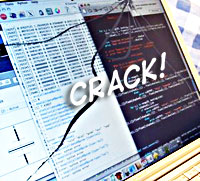 Motherboard fry-ups and hard drive breakdowns are now the two main sources of failure for desktops, a situation brought about by the increasingly complexity of the things, with more components being integrated into the motherboard.
Motherboard fry-ups and hard drive breakdowns are now the two main sources of failure for desktops, a situation brought about by the increasingly complexity of the things, with more components being integrated into the motherboard. Straight out of the, “What’s The Chuffin’ Point Of That” Dept comes two utterly daft USB devices.
Straight out of the, “What’s The Chuffin’ Point Of That” Dept comes two utterly daft USB devices. But if you fancy indulging in a bit of micro air guitar work while carrying around a paltry amount of over-priced flash memory, point your credit card in the direction of geekstuff4u.com
But if you fancy indulging in a bit of micro air guitar work while carrying around a paltry amount of over-priced flash memory, point your credit card in the direction of geekstuff4u.com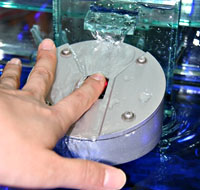 Underwater windows
Underwater windows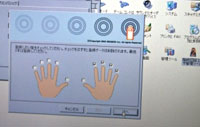 We’re not sure at what depth the thing keeps on working or why anyone would want to be logging on to Windows in their Speedos, but there’s an English language version of the software available, and the whole sub-aqua caboodle could be yours for just €137.
We’re not sure at what depth the thing keeps on working or why anyone would want to be logging on to Windows in their Speedos, but there’s an English language version of the software available, and the whole sub-aqua caboodle could be yours for just €137. Look, we know there’s something a bit sad about wanting a PC that glows brightly with useless dials, flashing lights and obscure read outs, but we just couldn’t hide our juvenile excitement when we saw this new gizmo from Japanese manufacturer Scythe.
Look, we know there’s something a bit sad about wanting a PC that glows brightly with useless dials, flashing lights and obscure read outs, but we just couldn’t hide our juvenile excitement when we saw this new gizmo from Japanese manufacturer Scythe. The panel is dominated by a large, circular colour LCD display giving readouts for computer temperature (centigrade/Fahrenheit, with up to four temperature sensors supported), fan speed, warning temperature and current time.
The panel is dominated by a large, circular colour LCD display giving readouts for computer temperature (centigrade/Fahrenheit, with up to four temperature sensors supported), fan speed, warning temperature and current time.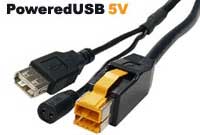 Pricing and availability to be announced. We’ll take two please!
Pricing and availability to be announced. We’ll take two please! PoweredUSB
PoweredUSB “Would you like a single piece of sheet music that contains all your favourite pieces, and never needs to be turned over?”
“Would you like a single piece of sheet music that contains all your favourite pieces, and never needs to be turned over?”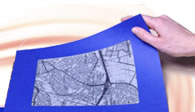 The universal piece of music wasn’t even the first prize winner in this competition. It was a contest sponsored by one of the world’s leading e-paper technology designers, Plastic Logic, which has demonstrated a flexible sheet of A5 “paper” that has the contrast and readability of real paper, the flexibility of soft cardboard, and the power consumption of a watch. And the prize went to something that is, in the end, “just a book.”
The universal piece of music wasn’t even the first prize winner in this competition. It was a contest sponsored by one of the world’s leading e-paper technology designers, Plastic Logic, which has demonstrated a flexible sheet of A5 “paper” that has the contrast and readability of real paper, the flexibility of soft cardboard, and the power consumption of a watch. And the prize went to something that is, in the end, “just a book.”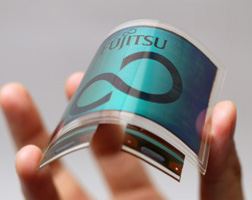 When you invent a new technology, you always start off by producing something which you know has a market already, and which you think you can do better.
When you invent a new technology, you always start off by producing something which you know has a market already, and which you think you can do better.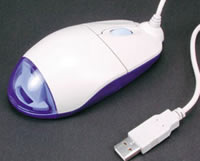 This is the week when our children’s children will look back and ask “Didn’t they honestly know?” – the week we pass laws enabling State ID cards. And what’s the hottest story of the day? A mouse with a microphone!
This is the week when our children’s children will look back and ask “Didn’t they honestly know?” – the week we pass laws enabling State ID cards. And what’s the hottest story of the day? A mouse with a microphone!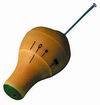 Stick one of these little bugs in your ear, and you’ll be able to hear everything that the mouse user says.
Stick one of these little bugs in your ear, and you’ll be able to hear everything that the mouse user says.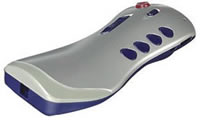 In the case of the spy mouse, you’re warned. If someone gives you a mouse looking like this, you can obviously tell it’s not a standard Microsoft or Logitech mouse, and adjust your conversation to suit.
In the case of the spy mouse, you’re warned. If someone gives you a mouse looking like this, you can obviously tell it’s not a standard Microsoft or Logitech mouse, and adjust your conversation to suit.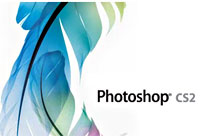 Frappuccino-supping designers desperate to run Adobe’s high-end Photoshop graphics suite on their shiny new Intel-powered Mac computers are going to be in for a long wait, according to Adobe engineer Scott Byer.
Frappuccino-supping designers desperate to run Adobe’s high-end Photoshop graphics suite on their shiny new Intel-powered Mac computers are going to be in for a long wait, according to Adobe engineer Scott Byer. Apple’s switch from PowerPC to Intel chips has forced software vendors to rewrite their code to accommodate the different architecture as the chips don’t share the same ‘language.’
Apple’s switch from PowerPC to Intel chips has forced software vendors to rewrite their code to accommodate the different architecture as the chips don’t share the same ‘language.’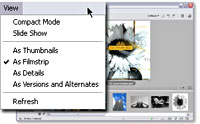 Currently, only Apple’s iMac, MacBook Pro and Mac Mini machines are powered by Intel chips, with the iBook and PowerMac machines still using IBM PowerPC chips.
Currently, only Apple’s iMac, MacBook Pro and Mac Mini machines are powered by Intel chips, with the iBook and PowerMac machines still using IBM PowerPC chips.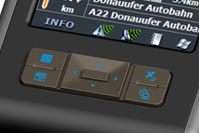 All-weather, lantern-jaw outdoor types and motorbike fiends should warm to the “ruggedized” version of the Pocket Loox N520 which has just been announced by the German based Andres-Industries.
All-weather, lantern-jaw outdoor types and motorbike fiends should warm to the “ruggedized” version of the Pocket Loox N520 which has just been announced by the German based Andres-Industries.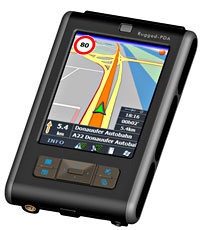 Motored by an Intel XScale PXA270 312 MHz CPU, the LOOX offers integrated wireless LAN 802.11g Wi-Fi, SD/MMC slot (with support for SDIO) and a large, 240×320 pixels 3.5″ screen supported by 64Mb RAM and 128Mb flash memory
Motored by an Intel XScale PXA270 312 MHz CPU, the LOOX offers integrated wireless LAN 802.11g Wi-Fi, SD/MMC slot (with support for SDIO) and a large, 240×320 pixels 3.5″ screen supported by 64Mb RAM and 128Mb flash memory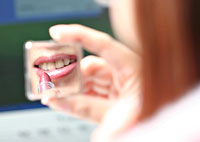 You know the problem: you’ve rushed into work late, sat yourself down at the desk only to realise that there’s not enough USB ports on the machine so you can’t plug in your DVD backup.
You know the problem: you’ve rushed into work late, sat yourself down at the desk only to realise that there’s not enough USB ports on the machine so you can’t plug in your DVD backup.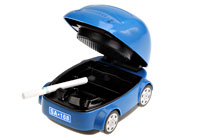 The ‘Mini Mirror Hub’, described as “the most tiny, fashionable USB 2.0 HUB,” can connect up to four USB 2.0 (or USB 1.1) devices, supporting 480Mbps, 12Mbps and 1.5Mbps speeds.
The ‘Mini Mirror Hub’, described as “the most tiny, fashionable USB 2.0 HUB,” can connect up to four USB 2.0 (or USB 1.1) devices, supporting 480Mbps, 12Mbps and 1.5Mbps speeds. USB Ashtray
USB Ashtray USB Heating Gloves
USB Heating Gloves The London book fair, just finished. At it, there was no sign of an e-book reader from Microsoft – which is odd, because all the stuff Microsoft has been teasing us about with
The London book fair, just finished. At it, there was no sign of an e-book reader from Microsoft – which is odd, because all the stuff Microsoft has been teasing us about with